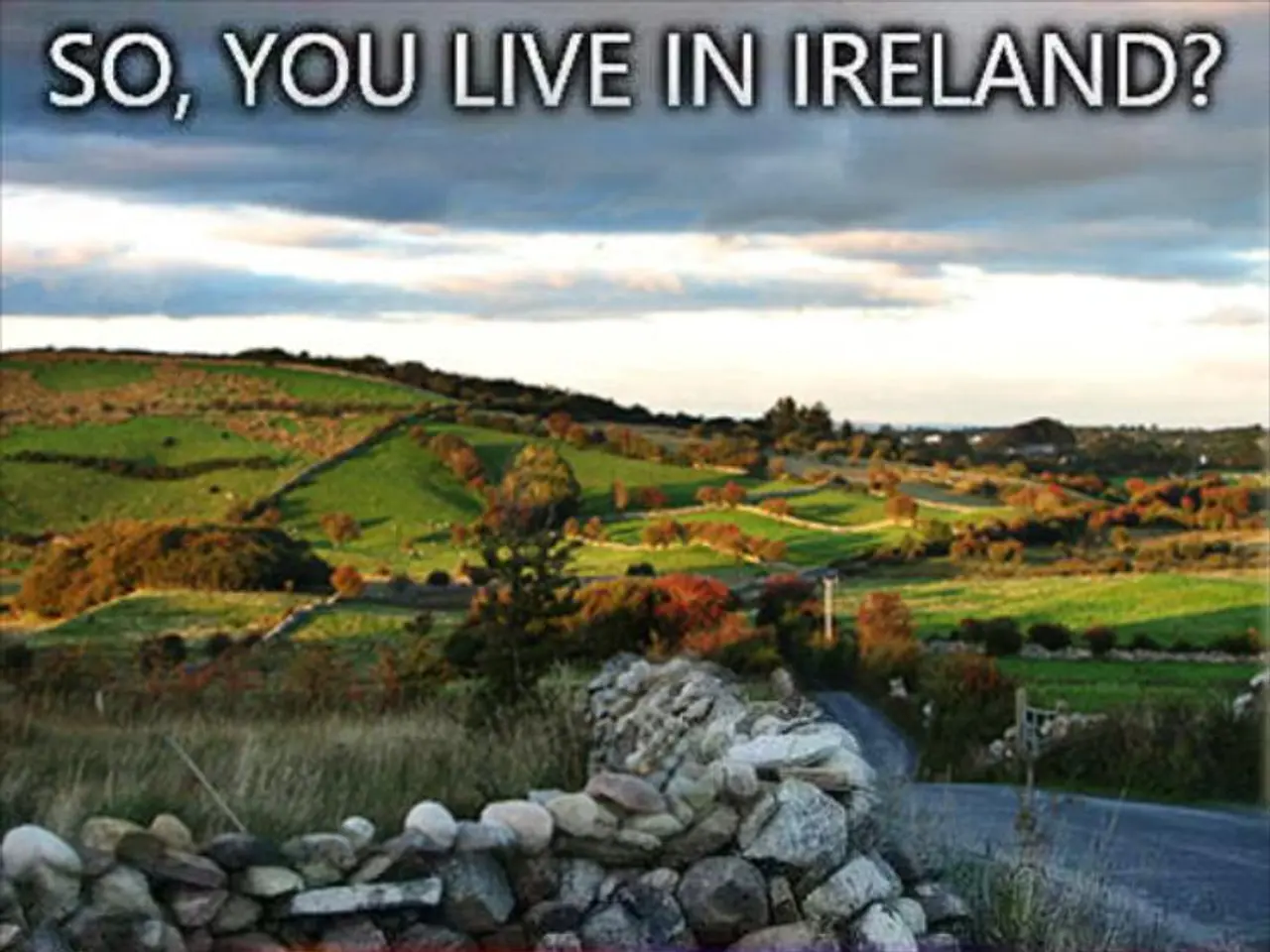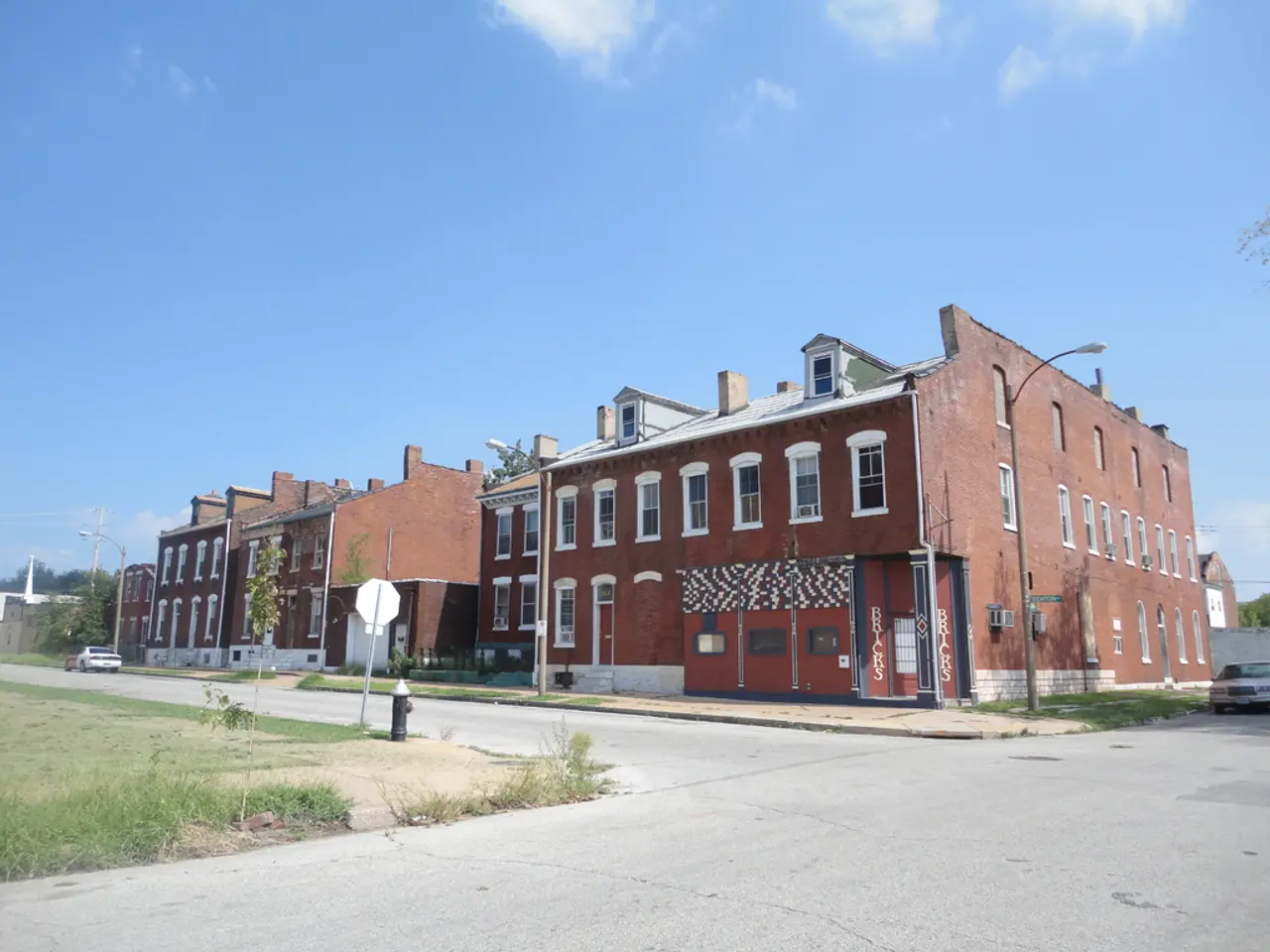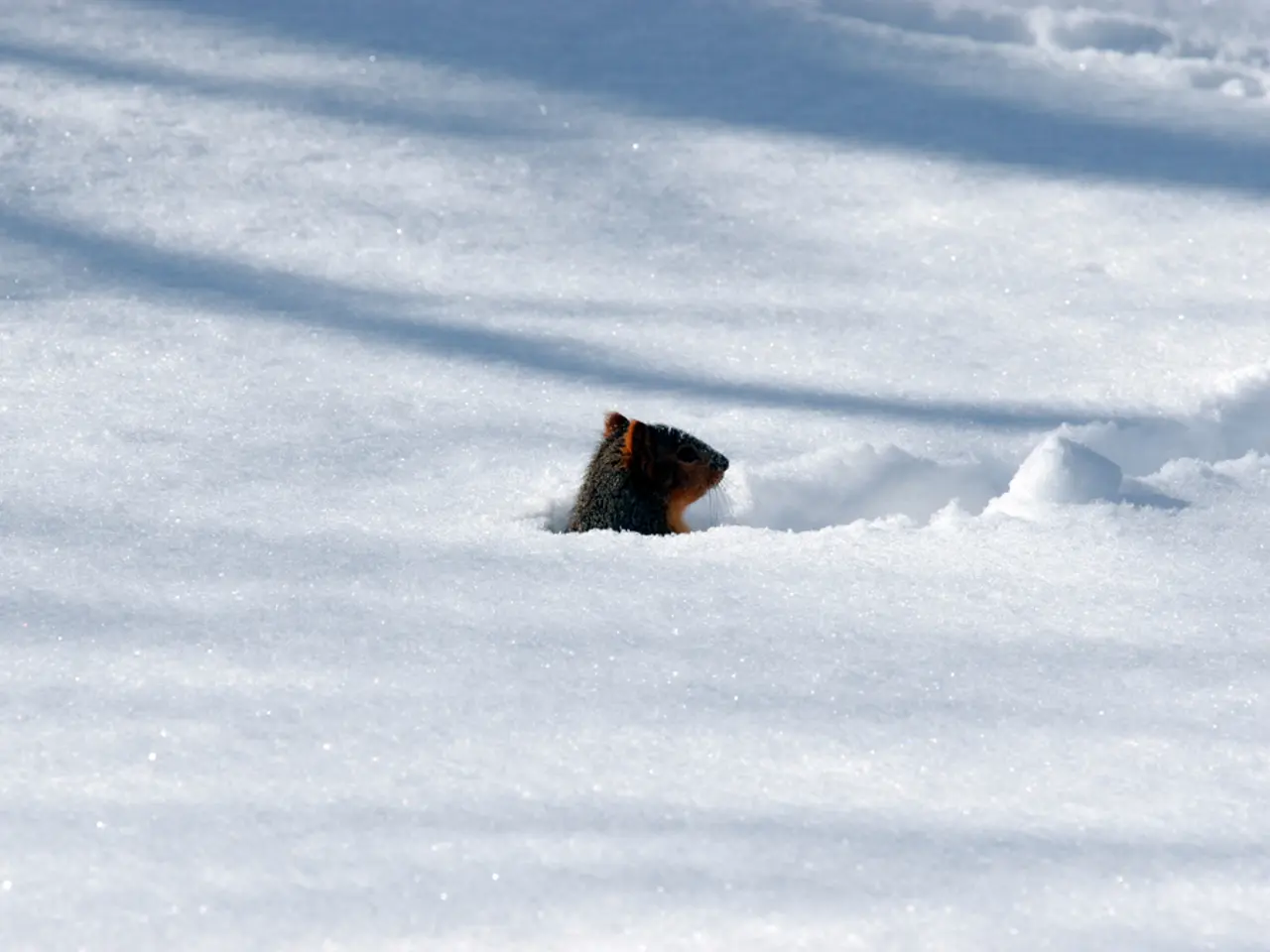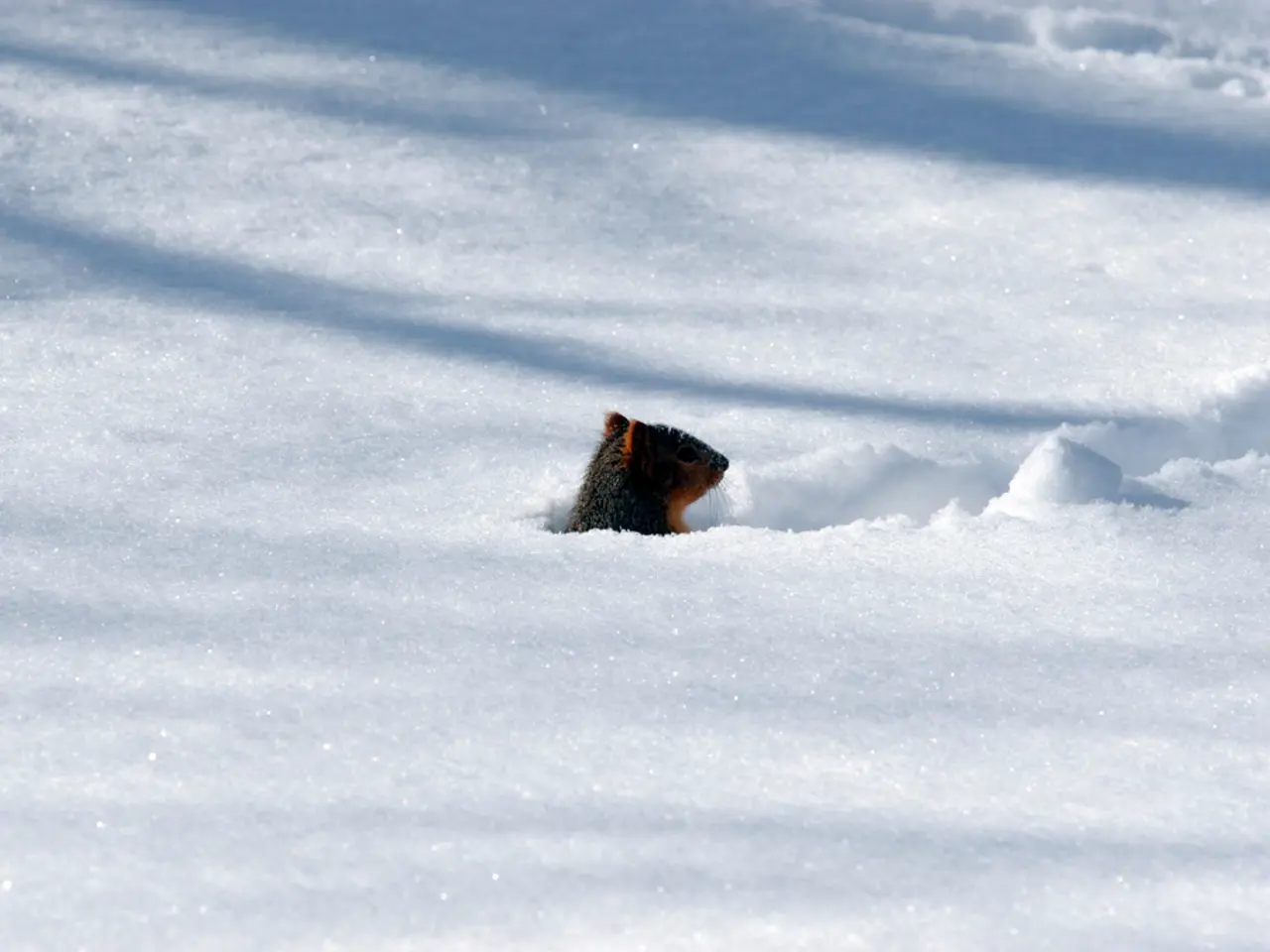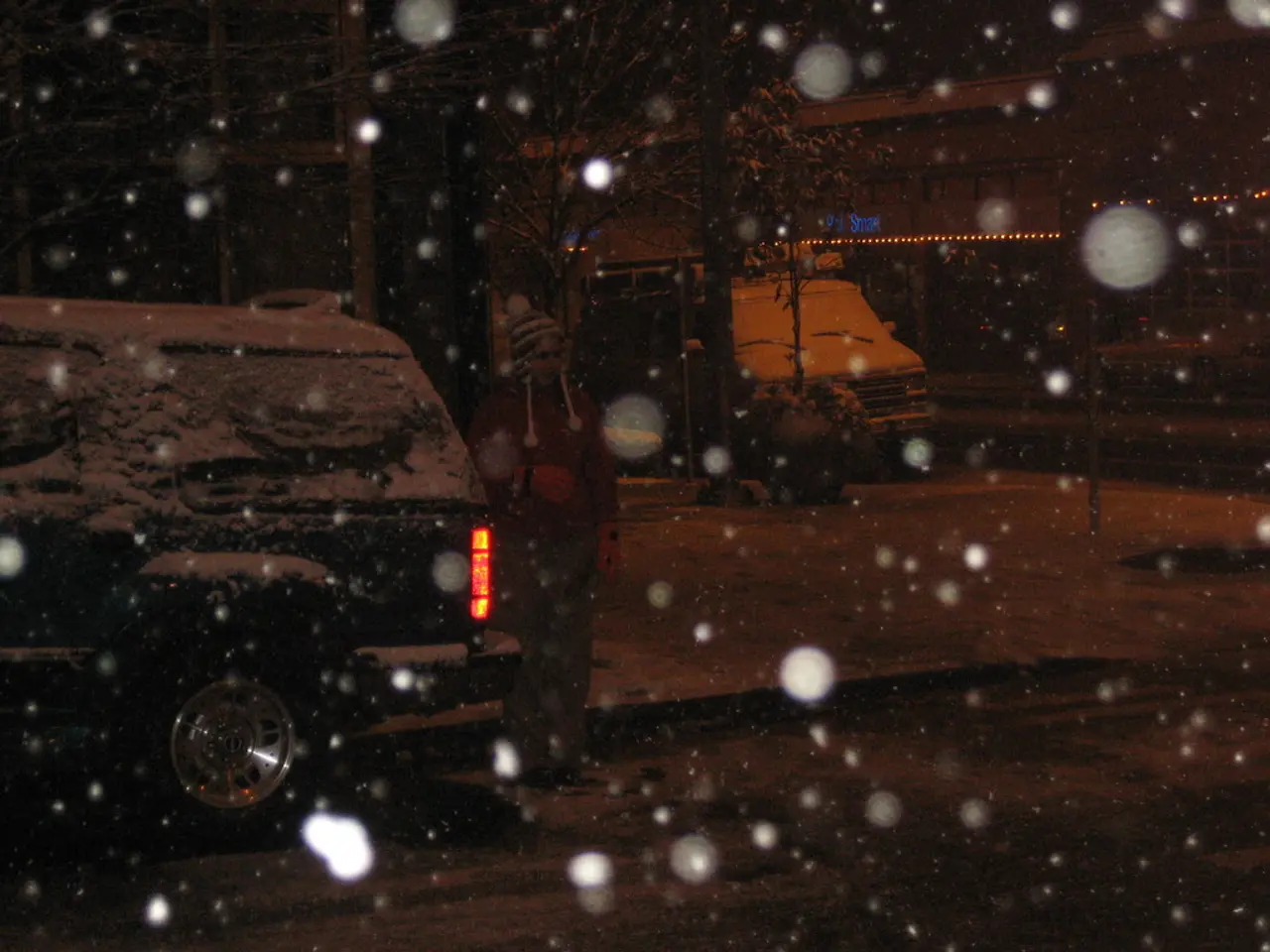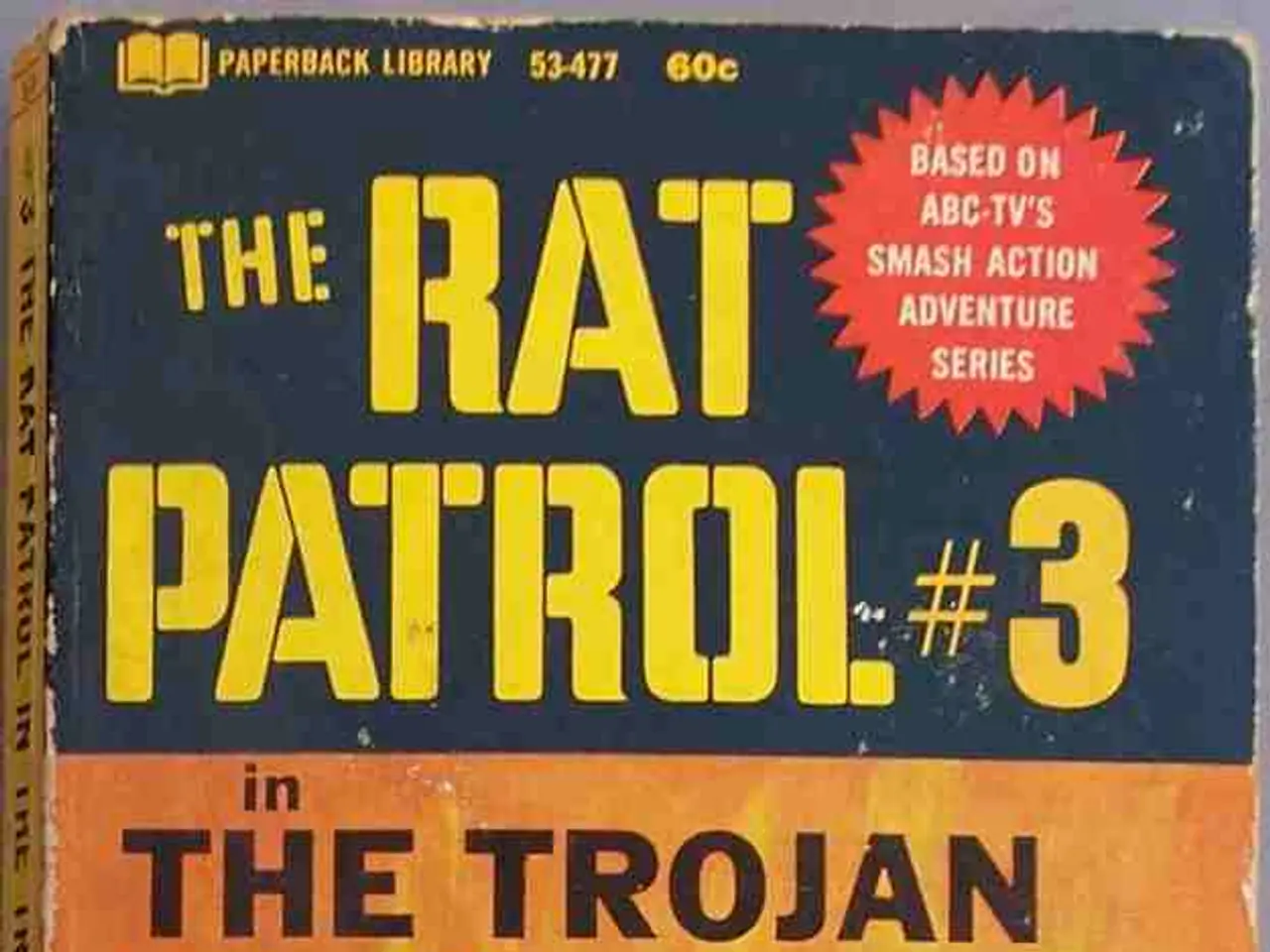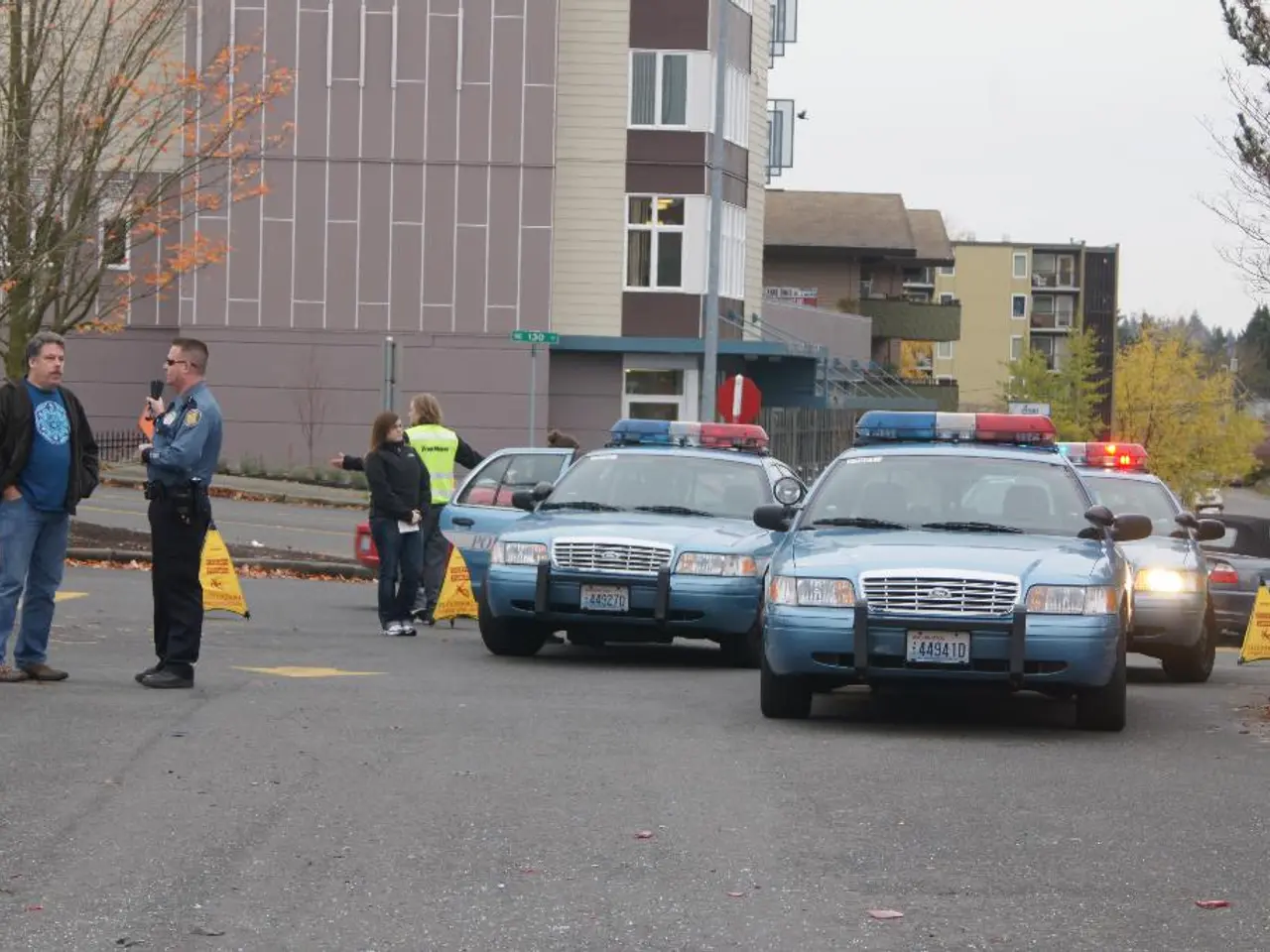Quick update: Flames near Los Angeles expanding at a rapid pace.
Breaking News: Canyon Fire Rages Near Los Angeles, Threatens Communities
The Canyon Fire, which erupted on August 7, 2025, is causing concern in California as it rapidly expands across Ventura and Los Angeles counties. The fire, which has grown to nearly 20 square kilometers, is currently spreading rapidly near Los Angeles.
The blaze started near Holser Canyon Road, northeast of Piru, and has moved eastward towards Val Verde, Castaic, and Interstate 5. According to reports, around 400 firefighters, along with aircraft and helicopters, are involved in containment operations.
As of August 9-10, the fire is approximately 25-28% contained, allowing some evacuation orders to be lifted and residents to return home. However, thousands remain under evacuation warnings or orders as firefighters continue their aggressive efforts amid hot, windy, and steep terrain conditions.
The local emergency was officially declared by the Los Angeles County Board of Supervisors to unlock critical resources, expedite firefighting, and streamline recovery efforts. Kathryn Barger from the Los Angeles County administration urges residents of nearby communities to take evacuation orders seriously.
While the cause of the Canyon Fire is still unknown, typical causes might include dry, hot weather combined with wind. However, the official cause remains unreported as of the latest updates.
In comparison to previous deadly fires in the Los Angeles area, the Canyon Fire’s acreage (~5,000 acres) is moderate—significant but smaller than some of the most catastrophic LA fires historically. For example, the 2018 Woolsey Fire burned over 96,000 acres and killed 3 people, causing widespread destruction across Ventura and Los Angeles counties.
Elsewhere in California, the Gifford Fire in central California is the largest wildfire of the year, spreading to an area of over 400 square kilometers by Thursday evening and is contained at 15 percent.
The Canyon Fire, while causing large evacuations and substantial firefighting response, has not been reported as deadly or as destructive in terms of structures lost or fatalities, according to the available information.
Andrew Dowd, spokesman for the Ventura County Fire Department, is optimistic about potential progress overnight on Friday. He references the Eaton fire as an example of how quickly a disaster can occur. About 4,000 people have already had to leave their homes due to the Canyon Fire, and another 12,000 residents should be prepared for evacuation.
The fire threatens power lines and several communities, and light winds are currently driving the fire eastward, but not causing widespread sparks like the fires in January. The size of the Canyon Fire corresponds to an area of approximately 2,800 soccer fields.
The Canyon Fire broke out about 60 kilometers northwest of the center of Los Angeles. The fire department has been deployed in large numbers for weeks to combat the blaze, and firefighters are working tirelessly to combat the fire. The fire's rapid spread has stirred memories of deadly fires in the past.
The Eaton fire, which destroyed more than 16,000 buildings at the beginning of the year, serves as a stark reminder of the devastation fires can cause. The Canyon Fire, while not as destructive at this time, remains a significant threat to the communities it is encroaching upon.
The Canyon Fire, a significant environmental-science issue, is not currently reported as deadly or destructive in terms of structures lost or fatalities, but it has prompted general-news coverage due to its rapid spread and large evacuations in Ventura and Los Angeles counties. As opposed to the catastrophic 2018 Woolsey Fire, the Canyon Fire's acreage is moderate, but it still poses a threat to the communities near Los Angeles. Meanwhile, the Gifford Fire in central California, the largest wildfire of the year, has expanded to over 400 square kilometers, causing concern in a separate region. The weather conditions, including hot, windy, and dry weather, may have contributed to the Canyon Fire's eruption, similar to typical causes of wildfires.
